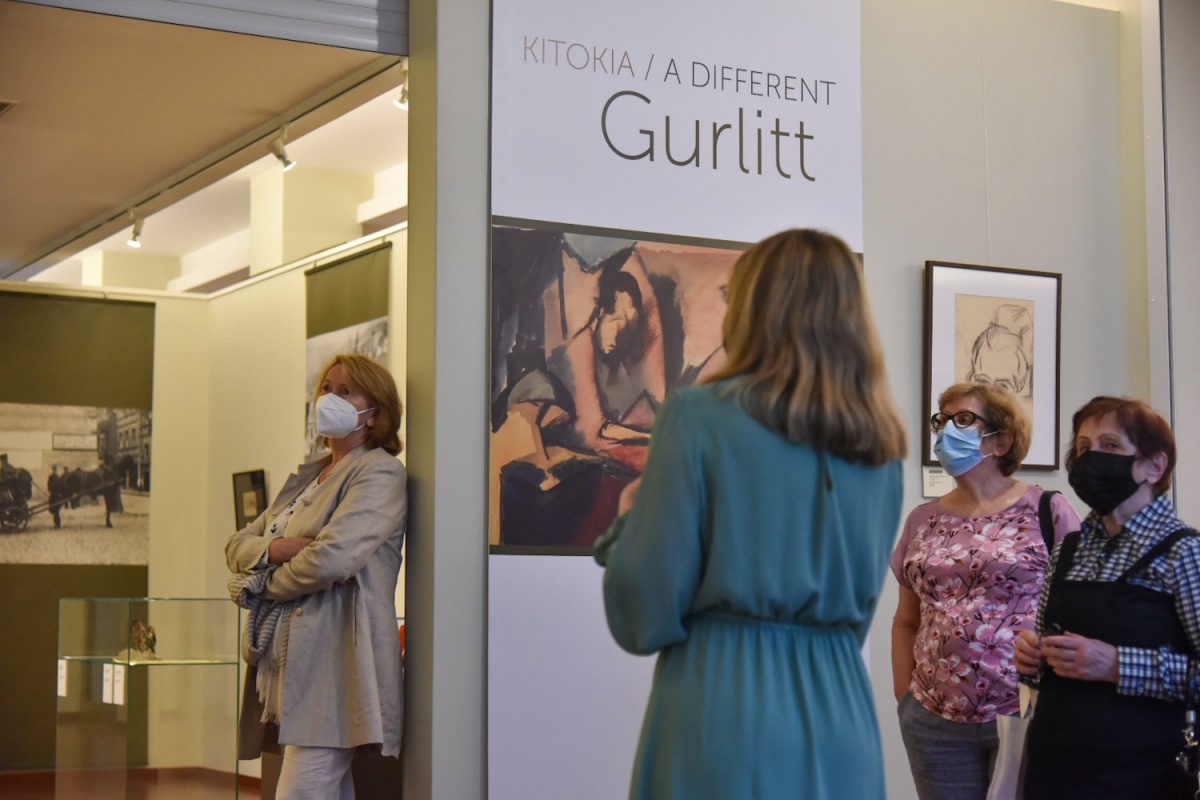On 9 June 2021, an exhibition A Different Gurlitt opened in the Samuel Bak Museum (at Naugarduko St. 10/2, Vilnius), which is a division of the Vilna Gaon Museum of Jewish History, the core of which is made of the never-before-seen works by the expressionist of the early 20th century, Cornelia Gurlitt, and comes from the collection of her nephew, Cornelius Gurlitt, which was inherited by the Museum of Fine Arts Bern.
In 2012, over 1,400 works of art were discovered in the apartment of a German senior citizen, Cornelius Gurlitt, in Munich, Germany. His whole life he had kept safe the collection entrusted to him by his father, Hildebrand Gurlitt, who was one of the four art collectors collecting artworks for the Hitler museum. The exhibition A Different Gurlitt presents 34 of these works, as well as 16 pieces of her artwork that are part of the collection of the Vilna Gaon Museum of Jewish History.
The drawings and lithographs by Cornelia Gurlitt (1890 Berlin – 1919 Berlin), who was from a family with a long-standing tradition of patronage, reveal a personal drama of the artist who served in the First World War as a nurse in the German military hospital, in Vilnius. As early as 1914 she proved to be a talented expressionist in Germany (she studied art with Hans Nadler in Dresden and with Anton Kolig in Paris), dedicating her whole free time to art. Her soulmate, writer and art critic, Paul Fechter, described Cornelia’s art as follows: ‘This woman had the force of oppressive internal tension which was so characteristic of her. This woman, whose name and artwork are only known to a small circle of people whom she met while alive, was probably the most brilliant and talented of the younger generation of expressionists. <...> The drawings, lithographs and paintings she created at that time are the most expressive art of that period, and she probably has no equal among women artists.’
The majority of Cornelia’s works presented in the exhibition are displayed for the first time, as they have not been seen by anyone (except for her nephew Cornelius) since they had been hidden and kept safe for seventy years in an apartment in Munich. The works depict the period between 1914 – 1919, some of them had been created right before the artist’s decision to take her own life.
The exhibition also includes the historic events of World War I in Vilnius and Kaunas: authentic images of daily life taken by the photographers of the army of General Field Marshal Hermann von Eichhorn, the artworks by the German painter Magnus Zeller, who served in Kaunas during World War I and communicated with Cornelia, and carvings that were on display at the Vilnius Labour House exhibition in 1916.
Cornelia’s art exhibitions featuring the collection of the Vilna Gaon Museum of Jewish History were organised in Lithuania in 2015 and 2016 at the Vilna Gaon Museum of Jewish History, the M. K. Čiurlionis National Art Museum, the Curonian Spit History Museum and in 2017 they were displayed in the famous art festival Documenta 14 in Kassel, Germany.
The artist chose an independent path of a female artist: her work reveals the need for women’s liberation, the goal of becoming a full-fledged member of the society and winning her place in the still patriarchal world of the early 20th century and, most importantly, the search for the self and own identity.
The exhibition A Different Gurlitt will stay open till 3 October 2021. During this time the museum will organise thematic tours, educational and other events related to the topics of the exhibition.
Patron of the exhibition – Dr Hubert Portz, sponsors – the Lithuanian Council for Culture, the Embassy of the Federal Republic of Germany in Vilnius. Curator – Ieva Šadzevičienė, Head of the Samuel Bak Museum.
The Samuel Bak Museum is the largest division of the Vilna Gaon Museum of Jewish History, where Lithuanian Jewish art, culture and history expositions are held, including cultural and educational events, conferences, film screenings and discussions on various topics.









